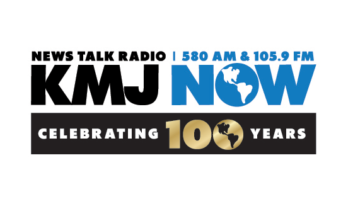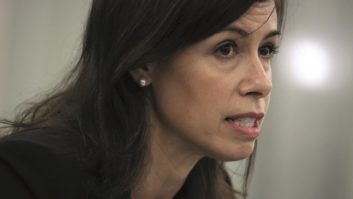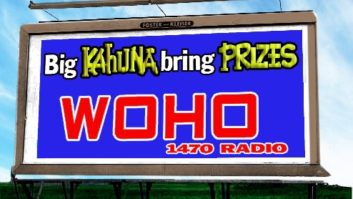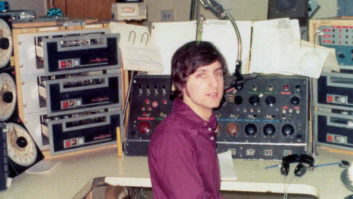This article originally appeared in the Nov. 19, 2014, issue of Radio World and was posted on this website Nov. 26, 2014, a nice Thanksgiving treat. See More of John’s Schneider’s Roots of Radio.
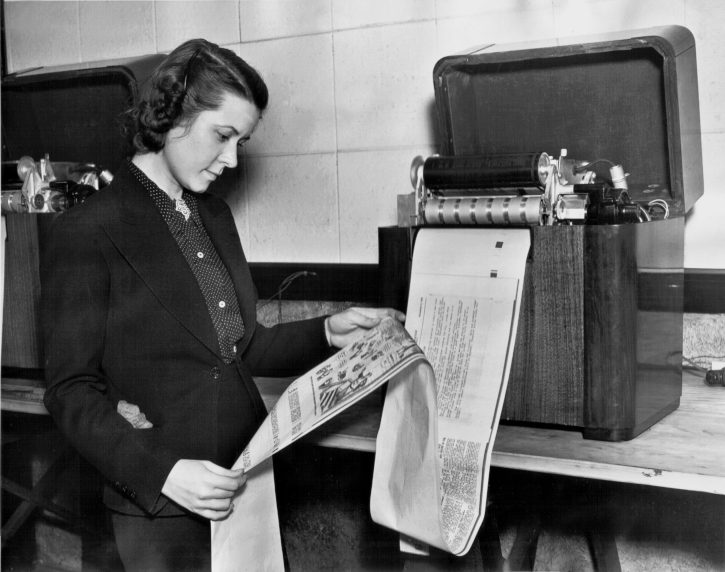
In the beginning, there were newspapers.
And then radio arrived, challenging the newspapers’ journalistic monopoly.
At first, many newspapers fought the new competitor, refusing to print radio news or program schedules. But some went in the opposite direction, deciding to operate their own radio stations to augment their businesses. And finally, a few brave pioneering publications went even farther: They tried to deliver their newspapers via radio facsimile.
In the early 1930s, radio facsimile looked like the dream application for newspapers. They could use their own local radio stations to deliver newspapers directly to consumers during overnight hours. It would eliminate the cost of printing and distribution and shift those costs onto consumers, who would provide their own printers and paper.
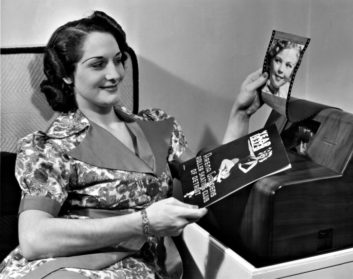
This led several radio stations and newspapers to experiment with facsimile transmission during the late 1930s.
THE FINCH SYSTEM
The person most responsible for this technology was William G. H. Finch. He worked for the International News Service and set up their first teletype circuits between New York, Chicago and Havana. He became interested in facsimile machines and eventually amassed hundreds of patents.
In 1935, he established Finch Telecommunications Laboratories to build and market his system. Although RCA had already developed a facsimile system, it was only focused on its commercial possibilities. Finch envisioned the delivery of newspapers to the public via radio facsimile.
The Finch system circumvented RCA’s patents in several ways.
First, image details were transmitted by varying the amplitude of an audio tone, instead of its frequency.
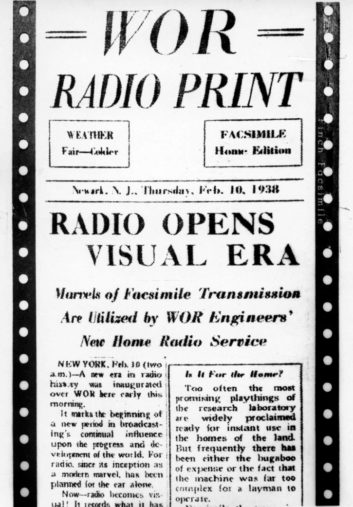
Second, it recreated the image by generating an electric current at the tip of a stylus to trace the image onto thermally sensitive paper (the origins of the thermal paper still used by cash registers today). Synchronization between the transmitter and receiver used the 60 Hz line frequency. The Finch scanning head focused a pinpoint scanning spot on the document. A motor moved the scanner across the page while another motor advanced the page at the end of each scanning line. Low-frequency sync pulses were inserted at the end of each line. The result was an audio signal that could be fed into any conventional AM transmitter.
Finch receivers sold for $125 and were housed in a one-foot-square wooden box that could be connected to the speaker of any radio receiver. The images were drawn onto a continuous roll of thermal paper 5 inches wide that sold for one dollar and would last about a week. The process was slow, taking about 20 minutes to print a 12-inch page, but a timer was used to capture the transmissions from a local AM station during overnight hours. Six hours overnight was enough time to print a six-page, two-column news bulletin.
Several stations received FCC permission in 1937 and 1938 to experiment with the Finch system. The first was KSTP in St. Paul, Minn. It was followed by WHO in Des Moines, Iowa; WGH in Newport News, Va.; WOR in New York; WGN in Chicago; WHK in Cleveland; WSM in Nashville, Tenn.; and WWJ in Detroit.
McClatchy Newspapers published the Radio Bee over KFBK in Sacramento and KMJ in Fresno, Calif. It required a staff of seven to produce the radio newspaper, and McClatchy bought 100 Finch receivers to distribute to listeners.
RCA ADAPTS
RCA, sensing it had missed an opportunity, quickly adapted its system for use by broadcasters.
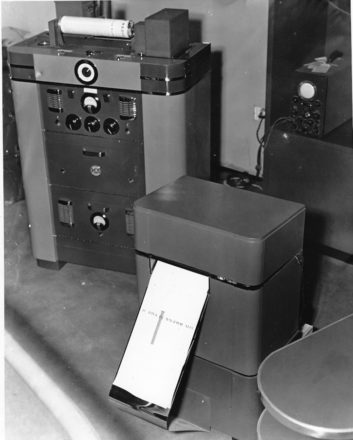
The RCA system went into operation overnights on the St. Louis Post-Dispatch’s station KSD in St. Louis in 1937. By late the following year, the service moved to an experimental ultra-high-frequency station, W9XZY, transmitting on 31,600 kHz with 100 watts. It had a range of about 20 miles. By using a dedicated transmitter for facsimile, the transmissions could be made during daytime hours, and so the Post-Dispatch transmissions now took place at 2 p.m. Also, ultrahigh frequencies were less susceptible to radio static, which greatly disrupted the received image quality. RCA provided 15 receivers for the experiment, placing them at Washington University and in St. Louis area homes.
The receivers sold for $260 each and combined an ultra-high frequency receiver and facsimile printer into a single cabinet that had no controls or adjustments — the user simply kept the receiver supplied with rolls of carbon paper and white printing paper. RCA also demonstrated its facsimile system at the New York World’s Fair in 1939, transmitting special “Radiopress” bulletins daily over WOR.
CROSLEY GETS IN THE GAME
At the same world’s fair, Crosley Radio Corp. surprised everyone by introducing its own facsimile machine called the “Reado,” with two models selling for $60 and $80. (A timer to turn the unit overnight cost an additional $10.)
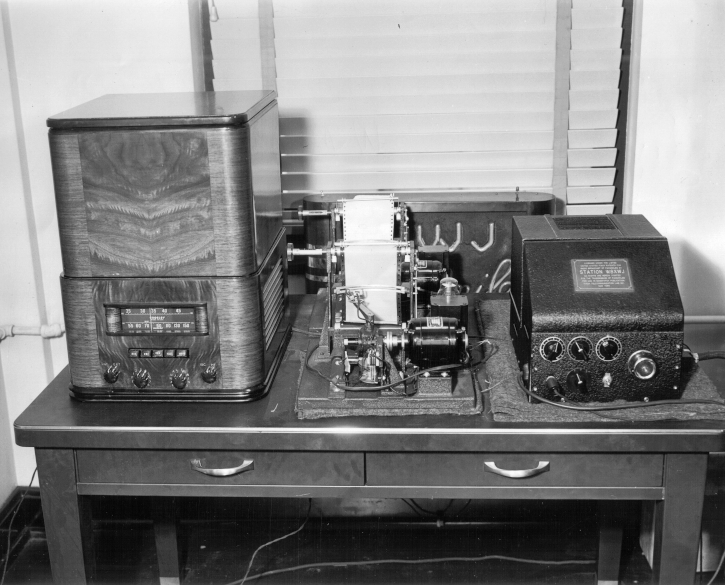
Powel Crosley had licensed the Finch technology and made some changes to reduce the cost. He produced an initial stock of 500 units and made plans to turn out up to 1,000 units a day. He began Reado facsimile transmissions during overnight hours over 500,000-watt WLW, which continued until 1942.
Most radio facsimile transmissions soon shifted from the AM band to the ultrahigh frequencies. About a dozen of these experimental stations were built, including the Milwaukee Journal station WTMJ, which transmitted over W9XAF.
Nonetheless, it soon became clear that radio facsimile was a technological dead end.
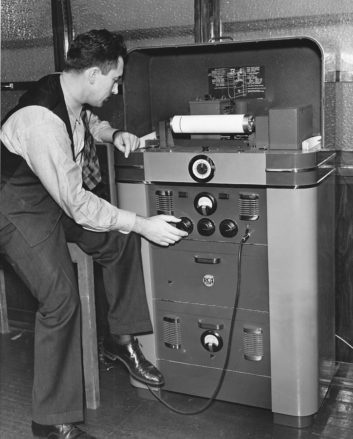
Despite all the promotion and hype, the public had neither asked for, nor cared about, the technology.
Receivers were expensive, suffered from frequent paper jams and outages, and were subject to content loss due to static.
To make matters worse, there were two incompatible standards fighting for market dominance.
Further, advertisers didn’t want to risk their money on the new medium, preferring the safety of traditional media.
The World War II paper shortages caused most facsimile stations to cease operations, and when the war was over, it was all but forgotten in the rush to build the new television industry. An attempt to bring it back on the FM band found no takers.
William Finch’s company went into bankruptcy in 1952, and RCA eventually took over many of his patents. Finch died in Florida in 1990 at the age of 93.
John Schneider is a lifelong radio history researcher. Write the author at [email protected]. See other photos from his collection. Click on the Roots of Radio tab atradioworld.comunder Columns.


